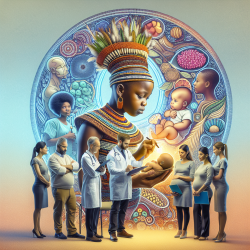Introduction
As a speech-language pathologist, understanding the broader cultural and environmental contexts of health can significantly enhance the outcomes for the children we serve. The research article "Reclaiming ??ina Health in Waim?nalo" offers profound insights into how the connection to ??ina (land) is pivotal to health and resilience among Native Hawaiians. This blog explores the key findings from the study and how these can inform and improve our practice.
The Role of ??ina in Health
The study highlights that for K?naka Maoli (Native Hawaiians), health is not merely the absence of disease but a holistic state of well-being that encompasses spiritual, physical, and mental health. This holistic view is deeply rooted in the connection to ??ina, which is seen as a source of sustenance, healing, and identity. The concept of ??ina is integral to the K?naka Maoli worldview, where land and people are interconnected, and caring for the land is synonymous with caring for oneself.
Implementing ??ina-Based Practices in Therapy
For practitioners, incorporating ??ina-based practices can be transformative. Here are some ways to integrate these insights into your therapeutic practice:
- Holistic Approaches: Consider the child's environment and cultural background as part of their therapeutic journey. Engage with families to understand their relationship with the land and how it might impact the child's communication and social skills.
- Community Engagement: Encourage community-led initiatives that foster connections to ??ina. Participating in or supporting community projects can enhance a child's sense of belonging and identity, which are crucial for effective communication and social interaction.
- Intergenerational Knowledge: Leverage the wisdom of elders and cultural practitioners. Involve them in therapy sessions to provide children with a richer understanding of their heritage and the importance of ??ina in their lives.
Encouraging Further Research
The study underscores the importance of community-based participatory research (CBPR) and ??ina Aloha frameworks. These approaches ensure that research is conducted with, rather than on, Indigenous communities, respecting their knowledge and priorities. As practitioners, advocating for and participating in such research can help bridge gaps in understanding and improve therapeutic outcomes.
Conclusion
Integrating the concept of ??ina into our practice not only aligns with culturally responsive care but also enhances the effectiveness of our interventions. By understanding and respecting the cultural and environmental contexts of health, we can better support the children and families we serve.
To read the original research paper, please follow this link: Reclaiming ??ina Health in Waim?nalo.










